The Kuwait Foundation for the Advancement of Sciences—under the patronage of its Director-General, His Highness Crown Prince, Sheikh Sabah Al-Ahmad Al-Jaber—announced Professor Ayman Fouad Sayyid as winner of the Arab and Islamic Scientific Heritage Prize for 2009CE; the award was for his critical edition of al-Maqrīzī’s seminal work, “al-Mawā‘iẓ wa al-i‘tibār fī dhikr al-khiṭaṭ wa al-āthār” (1st Edition), published by Al-Furqān Islamic Heritage Foundation in five volumes.
“Al-Mawā‘iẓ wa al-i‘tibār fī dhikr al-khiṭaṭ wa al-āthār” by al-Maqrīzī is a celebrated work in Arab heritage, and the most important source on Islamic Egypt’s history and urban topography.
Dr Ayman Fouad Sayyid performed robust scientific work in his critical edition of this grand work. He adopted the oldest and most important exemplar, namely a copy taken of a holograph in the author’s handwriting. Furthermore, he added illuminating explanations and comments, based on the conclusions of specialist texts and studies. He linked the book’s parts together, and referenced its information back to original sources. He added images and plans of the Fatimid city’s features, and also maps, illustrating urban growth, from the establishment of al-Fustat till the Ayyubids took power. He also provided further images, urban plans and maps showing features of Mameluke Cairo, and portraying the city’s growth; in particular, after the Ayyubids constructed the Cairo Citadel (Qal‘at al-Jabal), which became the seat of government in Egypt in the Mameluke era, continuing for several centuries after.
Dr Ayman initiated his comprehensive foreword by highlighting the importance of al-Khiṭaṭ, its author, and the large number of copies found in world libraries. Moreover, the interest by both orientalists and Arab workers in the work, the studies conducted on it, and the numerous prints and translations, explaining - while doing so - the book’s need to be published in a documented, scientifically rigorous form.
The critical editor presented the topics addressed by al-Maqrīzī in al-Khiṭaṭ, especially in relation to the urban topography of neighbourhoods (sing. ḥārah), thoroughfares (sing. darb), and alleyways (sing. zuqāq), and by a process of deduction and weighing determined the number of neighbourhoods in Cairo from the sources, generally, and al-Maqrīzī’s al-Khiṭaṭ, in particular. The editor was also able to develop a detailed description of the neighbourhood’s form, and its internal geographical and urban divisions.
The critical editor dedicated a section discussing the period in which the work was authored. He concluded that it was written in the aftermath of the crisis that swept Egypt at the end of the first decade of the 9th Century AH.
On the other hand, the editor subjected al-Maqrīzī’s sources in al-Khiṭaṭ to fine scientific study, presenting al-Maqrīzī’s methodology in quoting sources, and in turn, the sources themselves’ approach to referencing, their order, nature, publications and the research to which they were subjected. In addition, the editor explained the value and significance of al-Maqrīzī’s quotes from non-extant sources, for which he is the unique source.
The reader may also peruse the editor’s presentation of the book’s manuscript copies, generally, and the copies adopted in publishing the volumes produced, as testament to his fine and detailed presentation.
Among the features of scientific precision, is the critical editor’s adherence to providing detailed codicological descriptions of manuscript copies, employing the discipline’s technical terms.
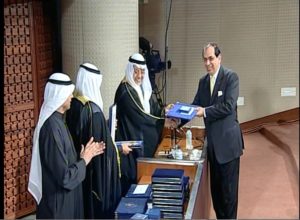


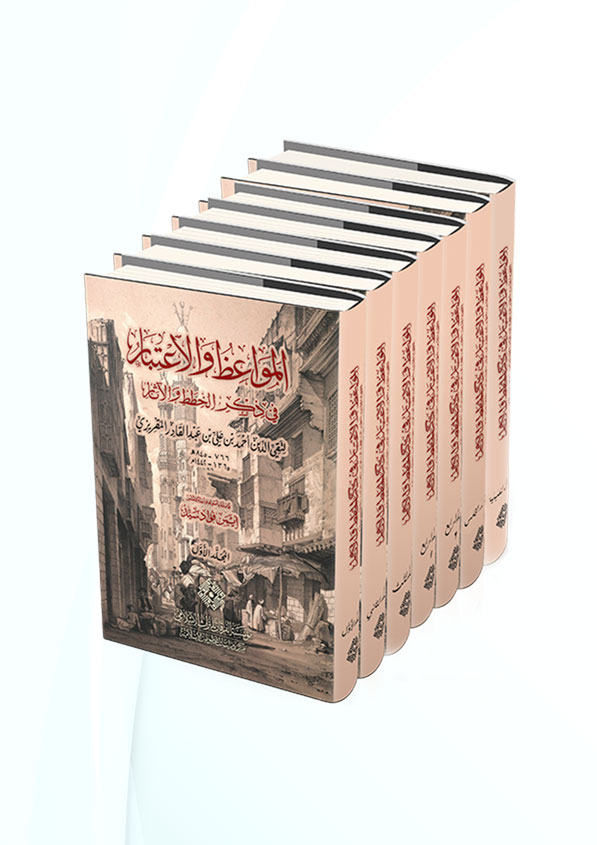

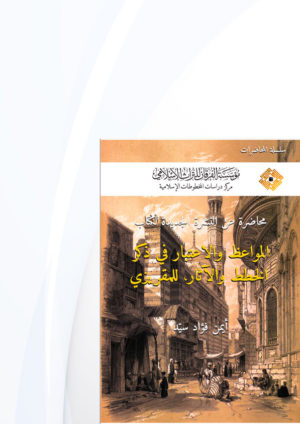
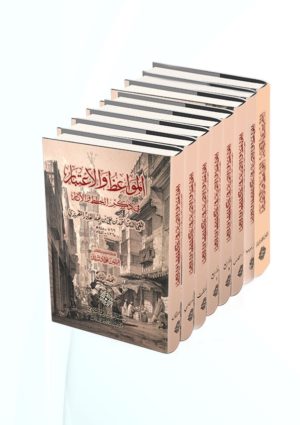

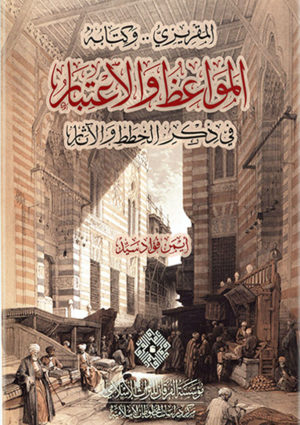
Reviews
There are no reviews yet.